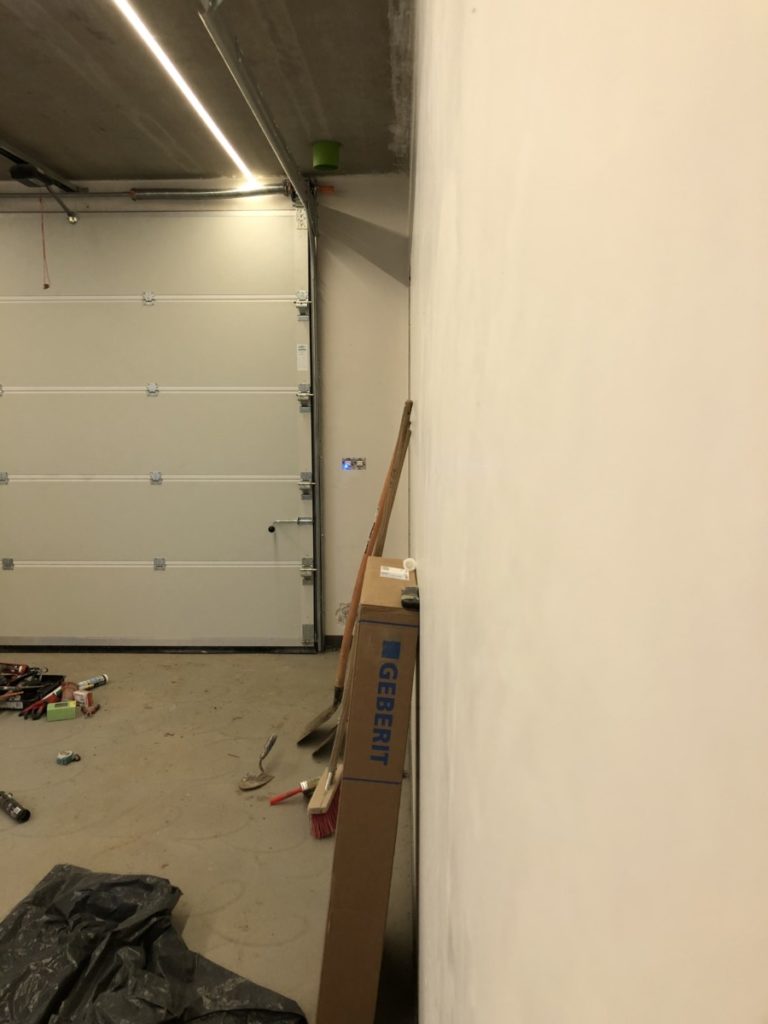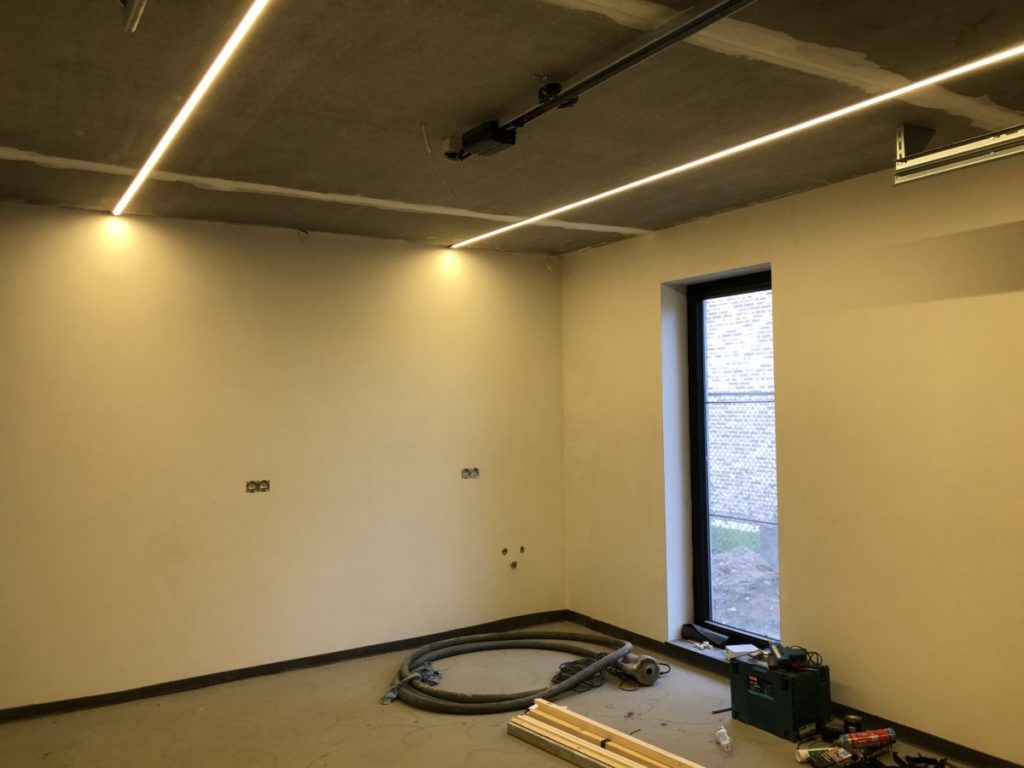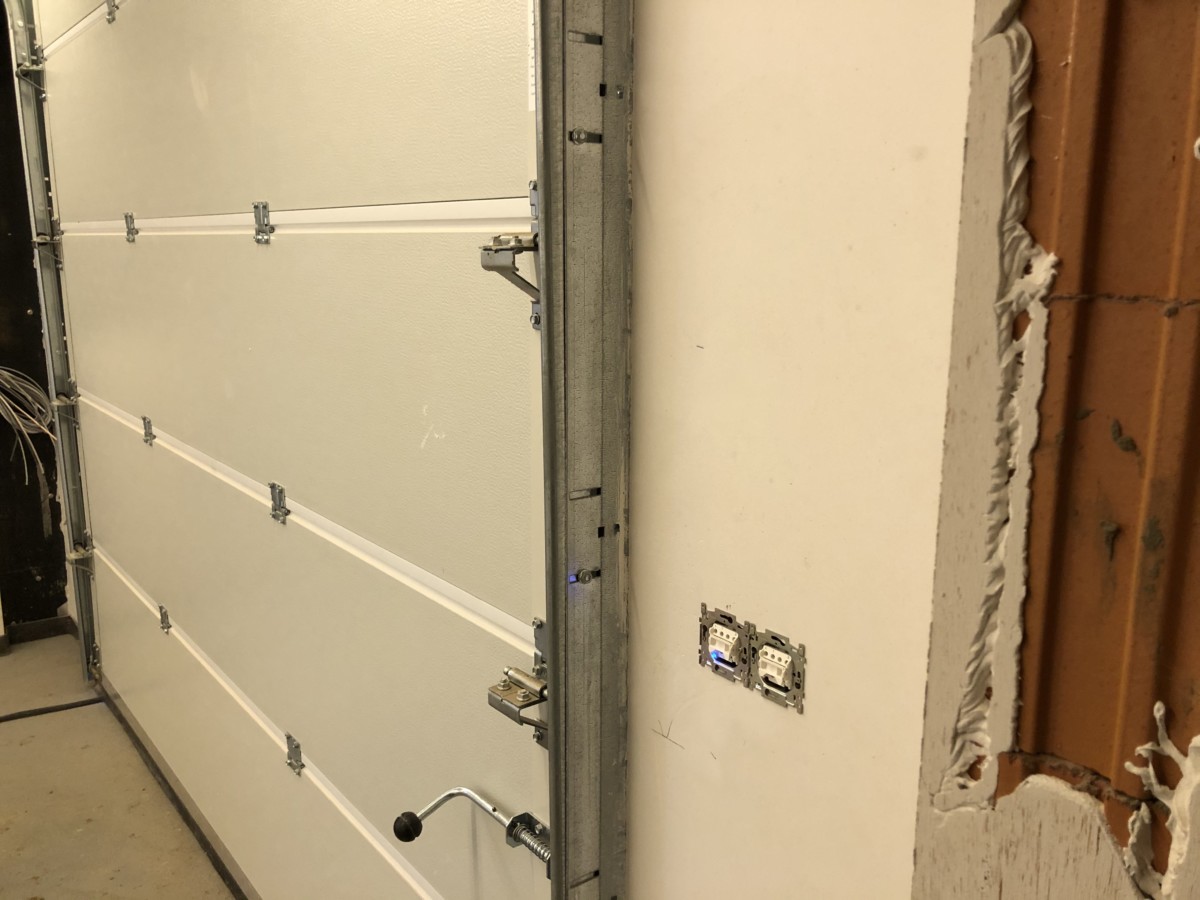Dreaming of giving your garage a makeover? When it comes to the options of what to do to those walls, plaster offers a solid and durable material. Though it may not be a professional’s top pick, that is mostly because plaster is a major job. And it can also be a messy job. But, the beauty of the finished project often outweighs the amount of time and energy it requires.
Is Plastering Garage Walls: Good or Bad? Applying a plaster finish to your garage walls has its pros and cons, yet the majority of the time, the pros are viewed as being worth the downfalls.
Pros:
- Durability
- Look of the finished product
Cons:
- Difficulty in repairing damaged plaster walls
- Difficulty removing plaster when it’s time for a change.
We asked the professionals what they thought about plastering the garage, here’s what they think:
Table of Contents
Can You Plaster Garage Walls?
If you’re getting ready for some renovations in the garage, you’ll need to think about walls. Finishing a naked garage can be a major project but will also be majorly gratifying when it’s done. Can you picture it in its final state? Will plastering your garage walls give you the effect and finish you’re looking for?
[googleadsycc adunit=”inarticle”]
You’ll want the plaster surface to hold up to the demands that a garage wall material needs to. Garage walls are typically plain and in need of a personal touch. Plaster can give your room texture and touch that plywood cannot.
As for the question of can you plaster a wall, the answer is yes! Homeowners and professionals have been using plaster for centuries for a wide variety of construction needs, including walls. Cement plaster is the most commonly used type of plaster for walls that need to stand up to the trauma we put our garages through.
Is Plastering Walls Good or Bad?
Plastering a wall can be a messy job but is relatively simple to work with. It may take someone that is not a professional longer than they had hoped, but in a technical sense, plaster is a user-friendly material.
One major reason that plaster is not a professional’s top suggestion for a garage wall is that plaster is not the ideal material for hanging shelves or other heavy objects from. If you do not plan on using the walls to hang a workbench from it, then carry on.
Using plaster for a wall finishing material has been used for a very long time, and for some, that means the practice is outdated. It is hard to believe that something so reliable can be tossed aside because the idea isn’t modern.
Repairing damaged plaster can be one of the major downfalls of choosing plaster as your material choice. Repaired patches should be done by an expert to get it as even as possible. Even having it done by a pro, the color of the new plaster and the old may differ because plaster tends to discolor over time.
Types of Plaster for the Job

Though plaster seems to be a relatively simple process, there is a ton of work done before that bag of powdered plaster hits the retail shelves. There are several different types of plaster used for home renovation and decoration. Other types of plaster are used for medical reasons like casts for broken bones and used in the dentist’s office for casting molds of your teeth.
Of course, you would not want to use one type for the wrong application. All plaster is not the same. Let’s go over the most popular types of plaster used in the home-
- Lime- Limestone is a naturally occurring mineral. When ground to a powder and mixed with several other elements and water, it is a great building and finishing material for walls and other structures.
Though it is most often used outdoors, in theory, it works quite well for indoor use. It is more durable than any other material used for plastering walls. It does take a longer time to set than other plasters.
- Cement- Cement plaster is possibly the most commonly used material for plaster. Cement is a mixture of many elements, including sand. Other than plastering, cement is used for a wide variety of other uses. Since it is so commonly used, the price of cement is the most affordable out of all the options.
- Gypsum (plaster of Paris)- Gypsum is a naturally occurring soft mineral. When mixed with a few other elements, it becomes a workable yet delicate material. It is not often used for a building material on its own, but it is commonly mixed into cement.
[googleadsycc adunit=”inarticle”]
Plaster of Paris (Gypsum) is a popular material used in crafts such as vases for flowers, and sand-cast molds of your children’s handprint. Gypsum is also used for things like chalk.
- Clay- Using clay as a building material is an ancient construction practice. Though it may be natural and beautiful, clay is not the ideal garage wall covering simply because clay has a nasty habit of cracking when it dries and settles. It may even warp or look distorted.
- Plasterboard- Also known as drywall, or sheetrock. Panels of plasterboard are easier to work with than applying wet mixtures of plaster and smoothing it out. It will also result in an even finish and be ultra-smooth to the touch without all the sanding.
Plaster vs. drywall. Plaster is a much bigger project, and the outcome is often a more textured artistic finish. Drywall is a cleaner and simpler project, with a smoother finish. Sheets of drywall are sold at most home improvement stores in 4′ x 8′ panels.
Why Plaster?

Home remodeling and home improvements often require tons of research and consideration. While one material and method work best for one person, it doesn’t mean that it is the best choice for you. Have you always dreamed of mixing bucketfuls of plaster to makeover your home’s garage? Go for it!
The reason most people choose to work with plaster is that it can be easy to work with and result in a beautiful finish. Not only is plaster a good wall covering, but this material makes for an incredible decoration medium. Plaster castings of fancy designs or figures are quite popular.
DIY Project
Can anyone plaster a wall, or is it a job that is best left to the professionals? Though plastering can be touchy, it can definitely be done by a weekend warrior (and maybe a helper.)
[googleadsycc adunit=”inarticle”]
A professional may argue that they can achieve better results than you, but it is up to you to prove them wrong. Do your homework and watch a few tutorial videos before jumping right into it. Calling on a friend that has more experience with plastering could be a wise idea.
A home renovation project, such as plastering a wall, will be made much easier if you properly prepare yourself with the right tools and a clean space. Jumping into a project like this can turn out to be a total messy disaster if you do not set yourself up for success. Take the time to gather these materials and tools.
- Face mask
- Gloves
- Sander
- Trowel
- Buckets or vessel for mixing
- Shovel or tool for mixing
- Water
- Plaster powder
- Source of heat
- Drop cloths
Not into home renovations or messy jobs? There are plenty of professionals out there for hire that will do an amazing job that you can be satisfied with. Ask around for recommendations. For those that decide to carry out the project themselves, the following will be a helpful start.



0 Comments